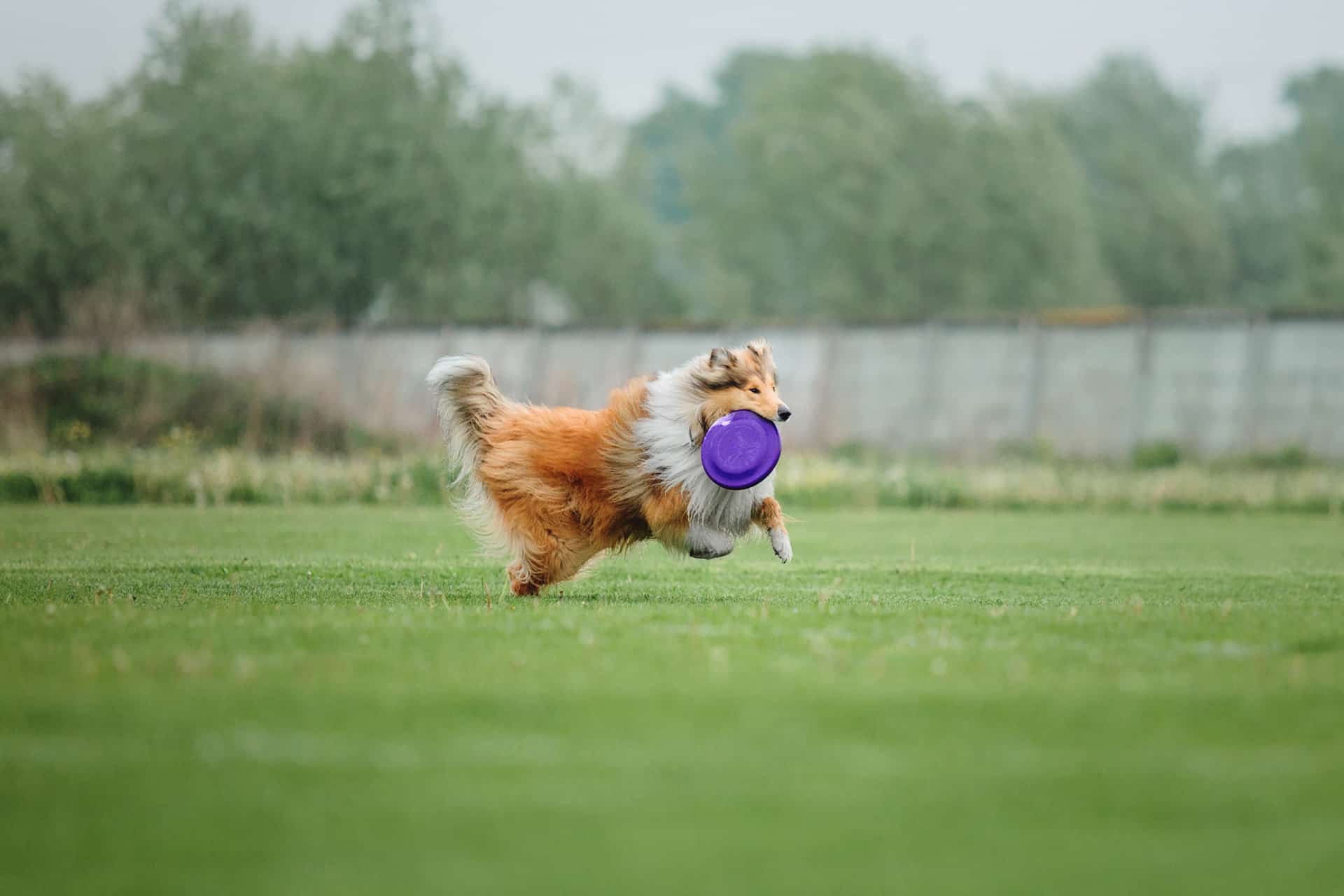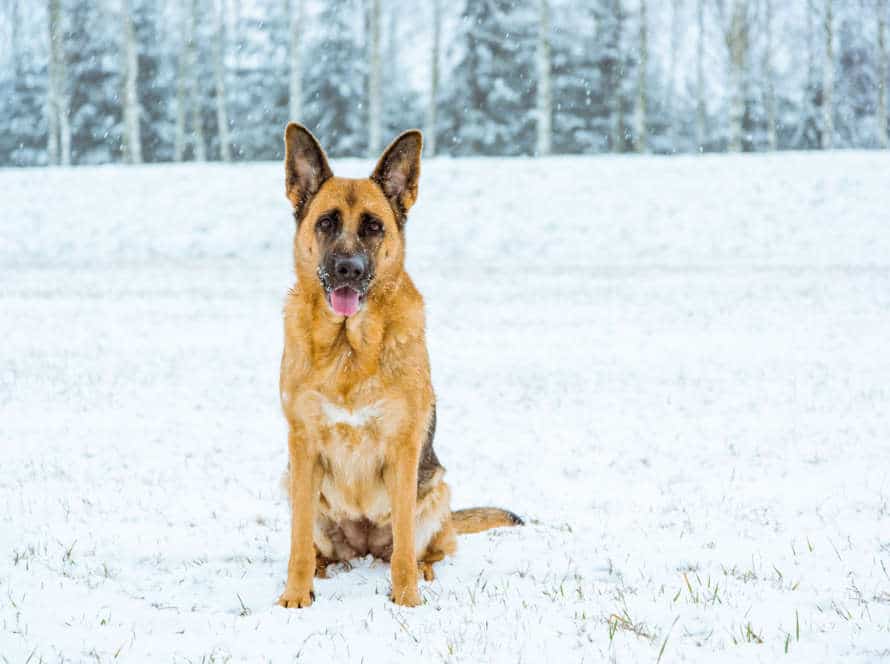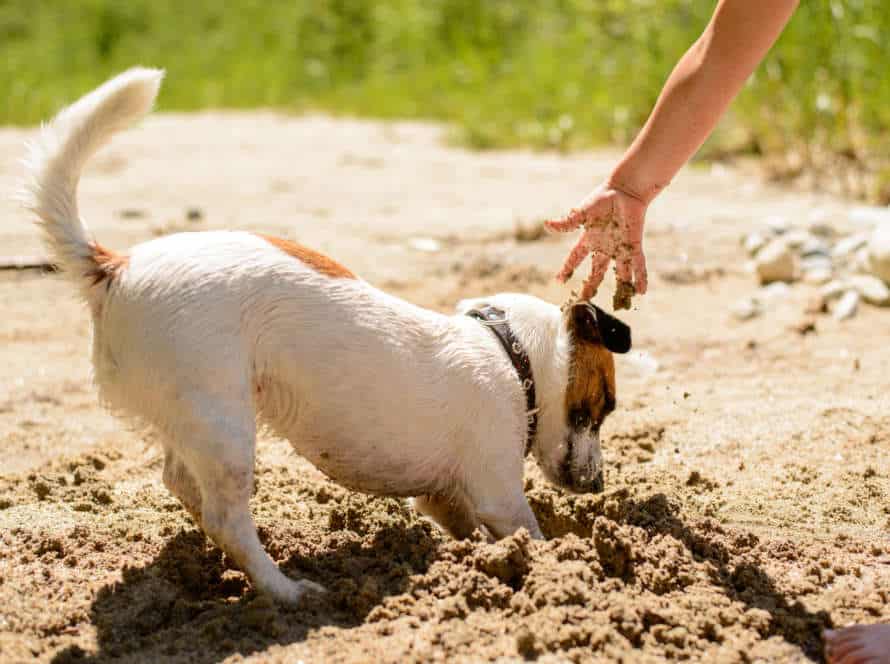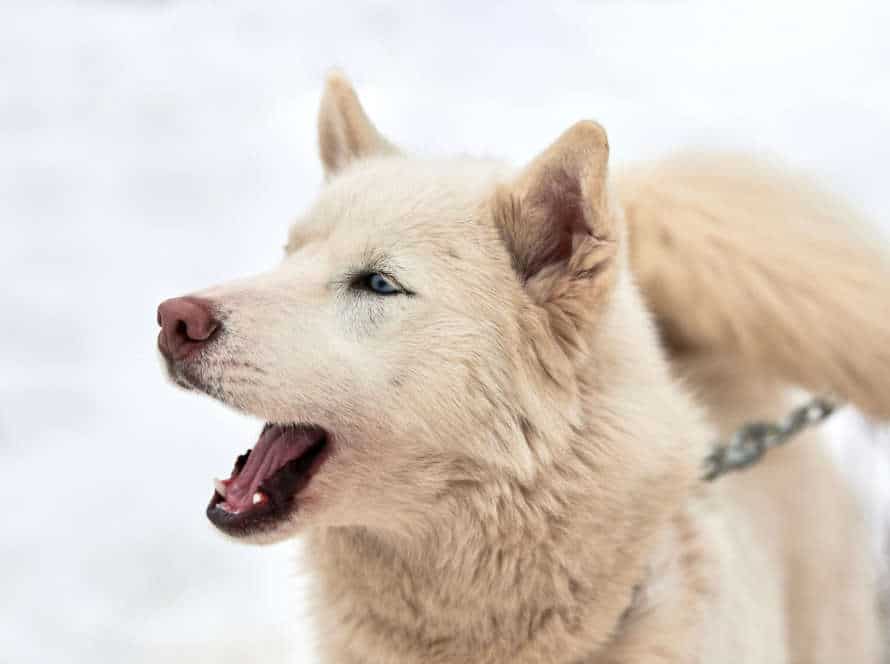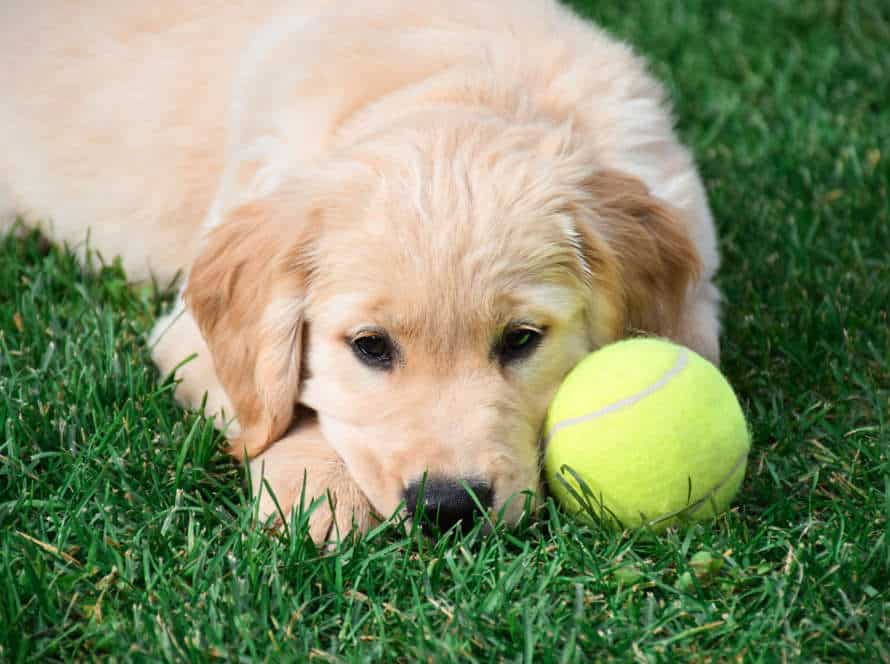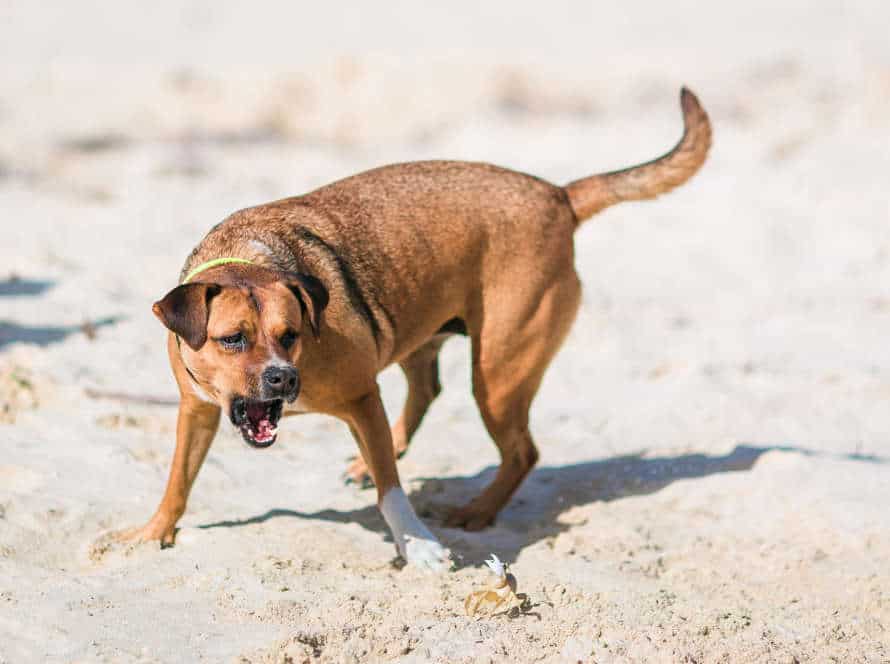How to Use Distractions to Curb Jumping Behavior
Distractions can be a great way to stop your pup from jumping. By getting them to concentrate on something else, you can teach them that leaping isn’t okay.
Here are a few tips:
- Give them treats – have goodies ready to reward them for good behavior. When they start to jump, offer a treat to draw their attention away.
- Have a toy – keep a toy close by and use it to distract them when they start to jump.
- Use a command – teach them a specific command, like “sit” or “down” and use it when jumping begins.
Pro tip: Consistency and patience are essential in stopping bad behaviors, like jumping. Make sure to reward good behavior often, and don’t accidentally encourage bad behavior.
Understanding Jumping Behavior in Dogs
Jumping’s a typical habit of dogs. It can be both sweet and irritating for pet owners. But when it’s a bigger pup, it can cause trouble – knocking over kids or elderly persons. To control the jumping, we gotta understand the various forms of it and its causes. So, it’s essential to note the causes behind the behavior.
Why Do Dogs Jump?
Dogs usually jump for multiple reasons: to say hi to people, for food or toys, or to show excitement or dominance. Jumping is normal for pooches, but it can be tough for pet owners trying to teach them. To prevent this type of behavior, it’s important to comprehend why they jump.
Distractions can be a great way to manage your dog’s jumping. Here’s how:
- Keep your dog on a leash when they meet someone or in crowded places.
- Throw a toy or treat away from the stimulus that makes them jump, as a distraction.
- Reward them with a treat or praise when they stay still.
- Consistency is key. With reinforcement and time, your pup will learn to regulate the jumping.
Why is It Important to Stop Jumping Behavior?
Jumping is a natural thing for dogs. But it can lead to injuries. So, it’s important to control it. Distractions are a great way to do this. When your dog tries to jump on you, turn away and cross your arms. Stay still until the dog calms down. Reward them with a treat or praise when they do. Keep doing this. Exercise, toys and attention will help too. That way, you can stop them from jumping and keep them from getting bored and doing bad things.
How to Approach Jumping Behavior in Dogs
Dogs naturally jump to greet their owners and others. To address this, first understand why they jump. Here are some tips on distraction:
- Train a command such as “sit” or “down” to redirect their behavior.
- Distract them with a treat or toy.
- Consistent training and positive reinforcement are the keys to reducing this behavior.
With patience and practice, your dog will learn to greet people in a more appropriate way.
Using Distractions to Curb Jumping Behavior
Jumping behavior can be tricky. But never fear, there are methods to tackle it! Distractions are an excellent way to divert your pup’s attention away from the source of the jumping. Let’s explore how to use distractions to stop jumping behavior in dogs.
Types of Distractions
To reduce jumping in dogs, there are two types of distractions:
- Environmental distractions are any stimuli around the dog like a toy or a person. Use them at training sessions.
- Redirective distractions are objects to divert attention away from jumping. Toys, treats and games that need the dog’s involvement are good redirective distractions. Introduce these gradually and consistently to encourage good behavior and stop jumping.
To make distractions efficient in training the dog, be patient and consistent. Reward the good behavior and redirect jumping before it happens. With practice, distractions will work.
Choosing the Right Distraction
Jumping can be a problem in pets. Distractions can help if used correctly. So, it’s important to choose the right one. Here are some effective distractions:
- Toys – Get something for them to play with. Squeaky toys or balls are great.
- Treats – Give them treats to reward good behavior and distract them from jumping. But don’t overfeed them.
- Training – Teach them commands like “sit” and “down”.
- Sound – Use loud clapping or hissing to grab their attention and redirect them.
It’s key to understand your pet’s preferences and behavior first. With consistent training and positive reinforcement, jumping can be stopped.
When and How to Use Distractions
Distractions can be a good training technique to stop your dog from jumping. When and how to use them? Time it right! Distract your pup the second they are about to jump. Make sure to pick something that’ll grab their attention: toys, treats, or a loud noise. Keep using the same distraction until your pup learns.
Remember to stay consistent with your approach, otherwise it’ll confuse them. Avoid petting or hugging your pup when they jump; this may reinforce bad behaviour. With effective distractions, you can teach your pup proper behaviour and reduce unwanted jumping.
Common Mistakes to Avoid
Using distractions to stop a dog from jumping is a common method. But, to be effective, it’s essential to dodge certain errors. Here are some of the most frequent ones:
- Using the same distraction again and again – If done regularly, your dog may stop being interested in the distraction and come back to jumping.
- Picking ineffective distractions – Not every distraction works for each dog. It’s key to find one that interests and engages your dog.
- Timing is critical – The distraction should be presented just before jumping.
- Rewarding the jumping behavior – If you give your pooch attention when he jumps, it’ll make it tougher to curb the behavior.
By avoiding these mistakes and using distractions rightly, you can effectively restrain your dog’s jumping. Pro tip – Use positive reinforcement to reward your dog when he demonstrates excellent conduct.
Implementing Positive Reinforcement to Curb Jumping Behavior
A dog jumping on folks can be tough to handle. Yet, with positive reinforcement, you can change this. Positive reinforcement is an efficient, humane form of training. It can include distractions and rewards. Let’s take a closer look at the benefits of positive reinforcement for curbing your pup’s jumping tendencies.
Using Treats and Rewards
Positive reinforcement is a great way to stop your pup from jumping up. Treats and rewards can help teach them better behaviour. Here’s how to use positive reinforcement and distractions to curb their jumping:
- First, figure out what triggers their jumping; like visitors or exciting events.
- Use a distraction like a toy or treat to draw their attention away from the trigger.
- Praise and reward them with the distraction when they stay calm and don’t jump. This will show them that good behaviour earns rewards.
- Practice this consistently to reinforce the desired behaviour and discourage jumping. With time, they’ll learn that jumping is not okay. Calm behaviour is the best way to get treats.
With patience and repetition, you can use distractions and positive reinforcement to train your dog to jump less and behave better.
Encouraging Alternatives to Jumping
Jumping is a common pet behavior, but can be very annoying for owners. Instead of punishing them, use positive reinforcement. Here are some steps to help:
- Don’t pet them or give attention when they jump. Wait until they have all four paws on the ground.
- Show alternative behavior that gets attention. Teach them to “sit” or “shake hands“.
- Reward good behavior with treats, praise or toys.
- Distract them with a toy or treat.
- Repeat this often to help them learn.
Tip: Use consistent commands and positive reinforcement, not negative responses. This will help your pet behave the way you want them to.
Reinforcing Good Behavior
Positive reinforcement and distractions can help prevent pets from jumping. Here’s how to use them:
- Positive Reinforcement – If your pet greets you with all four paws on the ground, reward them. Give them a treat, verbal praise or play with a toy. This will help them understand that good behavior is rewarded.
- Distraction – When your pet tries to jump on you, distract them with a toy or treat in the other direction. This takes their attention away from jumping. Use this technique consistently to break the habit.
Never punish your pet for jumping. This could actually make the behavior stronger. Use positive reinforcement and consistent distractions for best results.
Common Mistakes to Avoid
Positive reinforcement and distractions help stop jumping behavior in dogs. But, dog owners should not make these four mistakes:
- Do not inconsistently or late reward the pup. Reward good behavior straight away for full effect.
- Do not punish when the pup jumps. This can make them anxious and more likely to jump.
- Pick high value distractions that the pup will stay interested in. Change them up and don’t let them become desensitized.
- Teach alternative behaviors, such as sitting or staying. This will keep their attention and stop the jumping.
Remember: Patience and consistency are key. Reward the good, not just punish the bad.
Consistency and Patience: Keys to Success
Stopping jumping behavior with distractions?
Be consistent and patient! Have a routine and set up a positive learning environment. Stay calm, focus on the desired behavior and reward success. These tips will ensure you have an effective journey to stop jumping with distractions!
Understanding the Importance of Consistency
Consistency is vital for success, particularly when it comes to training pets. It helps them understand what is expected and rewarded or punished.
To ensure consistency, create a routine and stick to it. This includes food times, potty breaks, exercise, playtime and using the same commands. Rewards and punishments should also be consistent.
Patience is a must for pet training, as it takes time for them to learn and adjust. Avoid distractions that disrupt training. Redirect your pet’s attention with toys or treats to stop jumping behavior.
Pro tip: Consistency isn’t just useful for pet training. Use it in all areas of life. Have a routine, employ consistent methods, and be patient to reach your goals.
Developing a Consistent Training Plan
Developing a consistent training plan is essential for teaching dogs and improving their conduct. It needs patience, commitment, and a complete understanding of your pup’s personality and behavior. Here are the steps:
- Set clear objectives: Decide which behaviors you want your dog to learn or upgrade.
- Make a schedule: Plan a daily or weekly plan and follow it.
- Utilize positive reinforcement: Reward good behavior with treats, toys, and verbal compliments.
- Be patient: Dogs take time to learn new behaviors, so don’t wish for quick results.
Plus, using diversions can aid in stopping jumping behavior in pups. When Fido leaps on you, immediately turn away and stop giving them attention. This shows them that jumping leads to less affection, and they’ll eventually quit the action.
Pro Tip: Consistency is key to successful dog training. Stay true to your training plan, be patient, and use positive reinforcement to make training enjoyable and rewarding for your pup.
Being Patient Throughout the Training Process
Patience is essential for success when training a dog. Consistency too! Make sure to set realistic goals and timelines. Celebrate small successes. Understand that dogs learn at different paces. Take breaks when needed. Avoid frustration and burnout. Show love and affection. Use distractions, like toys or treats, to help curb jumping. Be positive and patient. That’s the key to success!
Celebrating Success and Staying on Track
Success and progress are essential! Consistency and patience are the two keys to success. However, distractions can cause us to veer off course. Here is how to use distractions to stay on track and motivated:
- Make a list of your top 5 values – make sure your goal aligns with them.
- Celebrate your small wins to boost your confidence.
- Surround yourself with people who will support and encourage you.
- Use distractions as a reward for achieving a goal, not as a way to avoid work.
- Have a daily routine to help you stay organized and focused.
- Take time to reflect on your progress. Celebrate your successes and adjust your approach when needed. This will help you stay motivated and on track to achieving your goal.
Advanced Training Tips for Curbing Jumping Behavior
Curbing jumping? Use distraction! It’ll help keep your pet in check. You can replace the desired jumping with something else, like sitting or staying. Here’s how to use distraction and other training tips to curb jumping behavior: get ready to dive in!
Building on Basic Techniques
Distraction training is an advanced way to stop jumping in dogs. To use it, start with the sit and stay commands. Then, give your pup a distraction like a toy or treat. Ask them to sit and stay focused on you instead of jumping. Reward them with the distraction when they obey. Increase the level of distraction as they improve. With consistent training, your dog will learn that sitting and staying will give them rewards. Always use positive reinforcement, not punishment.
Pro Tip: To speed up learning, use yummy treats or toys as the primary distraction during training.
Implementing Advanced Techniques
Essential for training your pooch to quit its jumping behavior is to utilize advanced techniques. A useful technique is to distract, to correct and prevent unwanted behavior. Here are some tips to use distractions to cease the jumping of dogs:
- Employ a treat or toy – Put the treat or toy in your hand where your pup can see it, and let them focus on that instead of jumping.
- Generate a diversion – When your doggo is about to jump, do something random, such as throwing a ball or clapping your hands, to divert their attention.
- Educate alternative behaviors – Show your pup to do something more constructive, such as sitting or lying down, to deter the jumping behavior. When the dog jumps, order them to sit or lie down, and reward them for the good behavior.
Distractions can be a useful way to coach your dog to stop jumping. Remain calm and consistent, and always award good behavior.
Working with Professional Trainers
Distractions can help stop dogs from jumping. Here are some tips to use them properly:
- Identify what triggers jumping. It might be a person, object or sound.
- Expose your dog to the trigger while keeping it on a leash or in a safe space.
- When your dog jumps, use a firm “no” or “off” command and get their attention with a toy or treat.
- Increase the distraction level until your dog can stay calm without jumping.
- Be consistent and patient. Reward good behavior and discourage jumping at all times. Lasting results will follow.
Troubleshooting Common Problems.
Jumping can be a problem for dogs. But, there are training techniques to help. Distractions are one way. Here’s how:
- When your dog starts jumping, make a loud noise like clapping or whistling.
- As soon as they stop, give them a treat or praise.
- With more practice, use toys or treats as rewards for stopping jumping.
- Be consistent with training and patient with your dog. With time and dedication, you can teach your pup to stop jumping and improve their behavior.
Frequently Asked Questions
Q: What are some common distractions that can help curb jumping behavior in dogs?
A: Some effective distractions include treats, toys, puzzles, and food-dispensing toys.
Q: How can I use distractions to train my dog not to jump on people?
A: Start by giving the distraction before your dog has a chance to jump. For example, if someone comes to the door, give your dog a toy to play with before they have a chance to jump on the visitor.
Q: Will using distractions to curb jumping behavior confuse my dog?
A: No, as long as the distraction is given consistently and before the jumping behavior occurs, your dog will eventually learn that jumping is not the desired behavior.
Q: Can using distractions as a training method be harmful to my dog?
A: No, as long as the distractions are safe for your dog to interact with and are given in moderation.
Q: How long will it take for my dog to learn not to jump on people with the help of distractions?
A: The time it takes for your dog to learn will vary, but with consistent and positive reinforcement, your dog should start to understand within a few weeks.
Q: Can I use a combination of distractions and verbal commands to train my dog not to jump?
A: Yes, using a combination of distractions and verbal commands can be effective in curbing jumping behavior.

